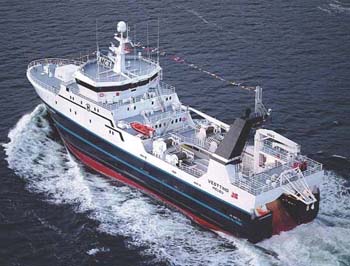Marine capture fisheries play an important role with regard to employment, income and the foreign exchange earnings of many countries. They also have a significant role in meeting the nutritional requirements of the population, providing food security, particularly for the poorer sections of coastal populations, and achieving the Millennium Development Goals. In order to safeguard this role, up-to-date information on the sector is needed to monitor the effect of management measures, regulations and government policies on its economic and financial health. The implementation of the Code of Conduct for Responsible Fisheries and the related Programmes of Action will be greatly facilitated when the economic and financial situation of the fisheries sector is duly taken into consideration.
This publication presents the findings of country-level studies on the economic and financial performance of marine capture fisheries. These studies were carried out from 2002 to 2003 with emphasis on the cost structure and economic and financial performance of fishing vessels. The studies form part of the regular monitoring of the economic and financial viability of marine capture fisheries, which is carried out by the FAO Fisheries Department in close cooperation with national fisheries research institutions, fisheries administrations and experts in selected countries in Asia, Africa, Latin America and the Caribbean and Europe.
The findings of previous studies carried out in 1999 to 2000 and 1995 to 1997 respectively, are reported in FAO Fisheries Technical Papers 377[5] and 421[6]. The recent studies adhere to the same method as before, which is described in the two Technical Papers.
Between 1999 and 2000, 15 countries were covered. During 2002 and 2003, however, only 13 countries were studied, mainly because of funding restrictions but also because of other commitments of participating research institutions. Fewer countries than in 1999-2000 were covered in Asia - China and Indonesia did not participate this time - and Europe, where Spain was not included. The countries studied in Latin America and the Caribbean remained the same and another African country, South Africa, was added. Compared with the previous studies, the number of fishing fleets covered was reduced from 108 to 96.
The countries that participated in the present study are Antigua and Barbuda, Argentina, Barbados, France, Germany, India, Norway, Peru, the Republic of Korea, Senegal, South Africa, Thailand and Trinidad and Tobago.

Coastal fishing boat, Norway
K.O.
STORVIK

Stern trawler, Norway
NORWAY
SEAFOODS
|
[5] FAO. 1999. Economic
viability of marine capture fisheries. Findings of a global study and an
interregional workshop, by J.-M. Lery, J. Prado & U. Tietze. FAO
Fisheries Technical Paper 377. Rome. [6] FAO. 2001. Techno-economic performance of marine capture fisheries, by U. Tietze, J. Prado, J.-M. Lery & R. Lasch. FAO Fisheries Technical Paper 421. Rome. |